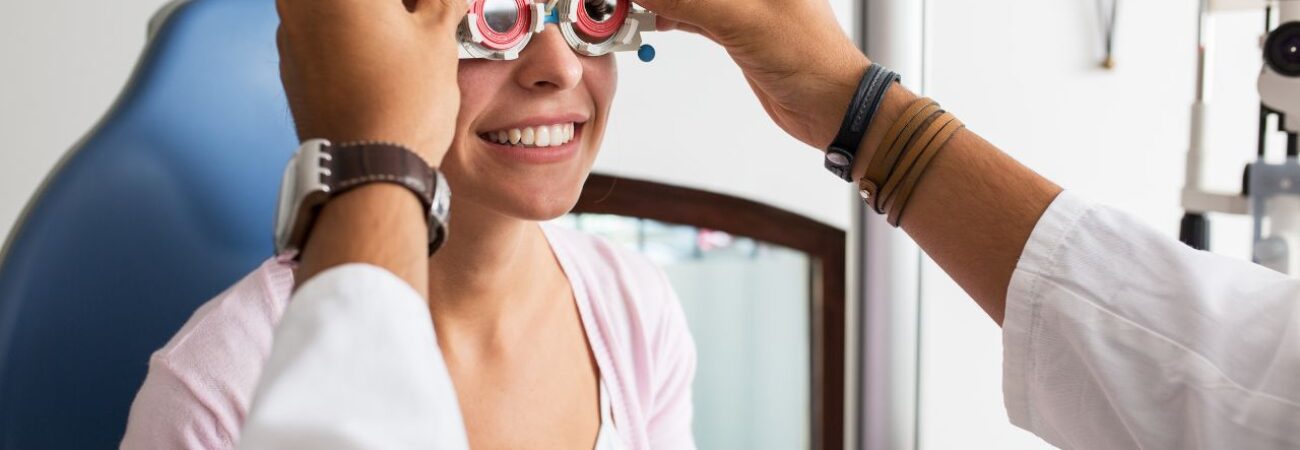Have you ever wondered why some glasses feel just right, while others seem off, even if the prescription is perfect? The secret might lie in a tiny but mighty measurement known as Pupillary Distance (PD). PD is the distance between the centres of your pupils, and it’s a game-changer in the world of eyewear.
But why does this small number hold such big importance? PD ensures that the lenses in your glasses align precisely with your line of vision. It’s like the GPS for your eyeglasses, guiding them to the perfect spot for crystal-clear vision. Whether you’re reading a book, working on your computer, or admiring the stars, PD helps make sure you’re seeing the world through the best part of your lenses.
Now, measuring PD might sound like a task for the pros, but guess what? You can easily learn to do it yourself with guidance from our optometry services.
What is Pupillary Distance (PD)?
Pupillary Distance is the measurement in millimetres between the centres of your pupils. Imagine it as the bridge that connects your eyes to your glasses. This measurement plays a crucial role in ensuring that your lenses are precisely aligned with your eyes. When your optometrist crafts your glasses, they don’t just focus on the lens power; they also take into account your unique PD to position the lenses perfectly in the frame.
Why is Accurate PD Measurement Crucial?
If you’re thinking, “It’s just a few millimetres, how much difference can it really make?” – Well, in the world of optics, every millimetre counts. Accurate measurement of your PD is not just a minor detail; it’s a cornerstone for comfortable and effective eyewear. Let’s explore why getting this measurement spot-on is so crucial.
The Eye Strain Dilemma
Incorrect PD can lead to eye strain. Your eyes naturally attempt to correct any blurriness by working harder, leading to fatigue. Over time, this strain can lead to headaches, dry eyes, and even dizziness.
The Discomfort Factor
Glasses with a PD that’s off can feel just plain wrong. They can sit awkwardly on your face or slip more often. For someone who wears glasses all day, this discomfort isn’t just a nuisance; it can be a real hindrance.
High Prescription, High Precision
This accuracy becomes even more critical for those with high prescription lenses. If your prescription is strong, a slight error in PD can greatly distort your vision. Imagine looking through a magnifying glass that’s not centred – the image is clear only in a small area.
Long-Term Vision Health
In the long run, consistently wearing glasses with an incorrect PD can contribute to worsening vision problems. It’s similar to walking with a bad posture – it might not hurt right away, but over time, it takes a toll.
Single PD vs. Dual PD
Both are crucial on their own, but what exactly sets them apart? Let’s break it down:
What is Single PD?
Single PD, often just called PD, is the measurement from the centre of one pupil to the centre of the other. This is the number most people refer to when talking about PD.
It’s a single measurement, typically ranging between 54-74 millimetres in adults, and 43-58 millimetres in children.
Single PD is like a one-size-fits-all approach – it’s used for most standard eyeglass prescriptions and is generally sufficient for the majority of eyewear needs.
What is Dual PD?
Dual PD, on the other hand, is a bit more personalised. It involves two separate measurements: the distance from the centre of each pupil to the bridge of your nose.
This means you get a measurement for each eye – for example, 32mm for the right eye (OD) and 31mm for the left eye (OS). Dual PD is particularly useful for ensuring a more tailored fit, especially if there’s a significant difference in the PD of each eye or for those with a high prescription strength.
When to Use Which?
- Standard Eyeglasses: For most people, single PD is adequate. It provides a good baseline for lens placement and is usually sufficient for standard prescriptions.
- High Precision Required: If you have a high prescription, an imbalance in your vision, or if you’ve noticed issues with past glasses, dual PD can make a significant difference. By customising the lens position for each eye, you ensure maximum clarity and comfort.
- Specialty Lenses: For specialty lenses, like progressive or bifocal lenses, dual PD can help in fine-tuning the lens alignment, ensuring that the multiple focal points in these lenses match perfectly with each eye.
Understanding the nuances of PD is key to choosing the right type of measurement for your needs. So, whether it’s single PD for everyday use or dual PD for that extra precision, knowing these differences empowers you to make informed decisions about your eyewear.
Measuring PD for Different Types of Glasses
Pupillary Distance (PD) is more than just a number; it’s a critical component in ensuring your eyewear fits your vision needs perfectly. This measurement can vary significantly based on the type of glasses you use, such as reading glasses, bifocals, or sunglasses.
Here’s where the expertise of an optometrist becomes invaluable. They can provide precise measurements and advice tailored to your specific eyewear requirements.
Reading Glasses
For reading glasses, which focus on close-up vision, the PD measurement may differ from your standard distance vision PD. This is because your eyes converge more when focusing on near objects.
Optometrist’s Role: An optometrist can accurately measure your PD for reading glasses, considering the unique way your eyes move and focus up close. They might adjust the PD slightly to ensure optimal alignment with where your eyes naturally gaze while reading.
Bifocals
Bifocals combine two different vision corrections in one lens, making accurate PD measurement crucial for a seamless transition between the two sections.
Optometrist’s Expertise: They can ensure that your PD measurement accommodates both the distance and reading portions of your bifocals. The optometrist will also verify that the bifocal line is correctly positioned for your unique eye alignment, typically just below the lower eyelid when looking straight ahead.
Sunglasses
Even for sunglasses, which might not always be prescription-based, the correct PD is essential for optimal vision and eye protection, especially for prescription sunglasses.
Why See an Optometrist: An optometrist will measure your PD accurately for sunglasses, ensuring that the lenses align with your natural line of sight. This is crucial for activities like driving or playing sports, where precise vision is key.
Understanding how PD varies for different types of glasses empowers you to make informed choices about your eyewear.
Whether it’s for reading, distance, or sun protection, your glasses need to cater to your specific vision needs, and it all starts with the right PD.
Your Path to Perfect Eyewear
It’s clear that this small but mighty measurement is a cornerstone in achieving perfect vision and comfort with your eyewear.
We’ve covered all the bases to ensure you’re equipped with the knowledge you need for the best eyewear experience.
At Eye Select, we’re committed to providing not just eyewear, but an experience that enhances your vision and lifestyle.
Our range of glasses is designed with precision and care, ensuring that each pair is perfectly tailored to your unique needs and preferences. With your newly acquired knowledge of PD, you’re now ready to choose glasses that offer unparalleled clarity and comfort!





